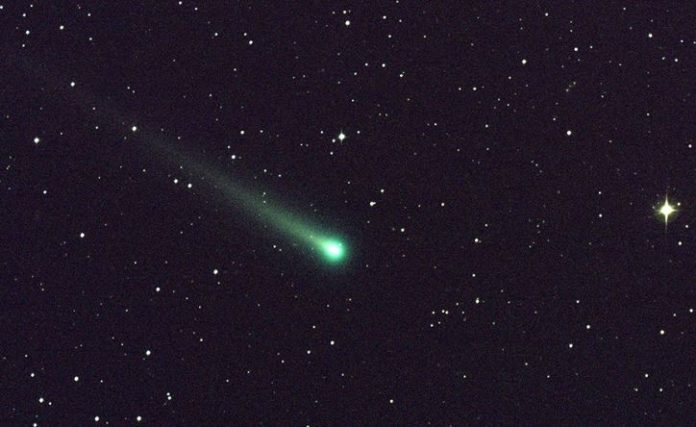A green comet was expected to be the most visible to stargazers on Wednesday as it shot past Earth and the sun for the first time in about 50,000 years.
Discovered less than a year ago, the dirty snowball last passed near Earth during Neanderthal times, according to NASA.
The cosmic visitor swung by our planet within 42 million kilometres (26 million miles) Wednesday before speeding away again, unlikely to return for millions of years.
By February 10, it will be near Mars, a good landmark. This is a good time for stargazers in the Southern Hemisphere to get a glimpse.
I hope this helps.
For Feb 10.
Should be visible with binoculars
RA and DEC of Mars below pic.twitter.com/l3FytrRoeS— FineStructureConstant (@Tokamak137) February 1, 2023
The Southern Cape Astronomy Club has some more information on where to see it in South Africa:
Finding a remote location to avoid light pollution in populated areas is key to catching a nice view of the comet as it journeys past our planet heading away from the sun and back toward the solar system’s outer reaches.
While plenty of comets have graced the sky over the past year, “this one seems probably a little bit bigger and therefore a little bit brighter and it’s coming a little bit closer to the Earth’s orbit,” said NASA’s comet-and asteroid-tracking expert, Paul Chodas.
Nicknamed “dirty snowballs” by astronomers, comets are balls of ice, dust and rocks and wander towards the inner solar system when they’re dislodged from various gravitational forces, becoming more visible as they venture closer to the heat given off by the sun.
Fewer than a dozen comets are discovered each year by observatories around the world.
The green comet was discovered on March 2, 2022 by astronomers using the Zwicky Transient Facility, a wide-field camera at Caltech’s Palomar Observatory in Palomar Mountain, California, the United States. That explains its official, cumbersome name: comet C/2022 E3 (ZTF).
Its greenish, emerald hue reflects the comet’s chemical composition – it is the result of a clash between sunlight and carbon-based molecules in the comet’s coma, the cloud around the nucleus that makes the comet appear fuzzy in the sky.
This comet last passed Earth at a time when Neanderthals still inhabited Eurasia, the human species was expanding its reach beyond Africa, big Ice Age mammals including mammoths and saber-toothed cats roamed the landscape, and northern Africa was a wet, fertile and rainy place.
The comet can provide clues about the primordial solar system because it formed during the solar system’s early stages, according to California Institute of Technology physics professor Thomas Prince.
NASA plans to observe the comet with its James Webb Space Telescope , which could provide clues about the solar system’s formation.
The Virtual Telescope Project at the Bellatrix Astronomical Observatory in Ceccano, Italy will have a live feed accessible here.
The green comet — a time capsule from the emerging solar system 4.5 billion years ago — came from what’s known as the Oort cloud well beyond Pluto. This deep-freeze haven for comets is believed to stretch more than one-quarter of the way to the next star.
While comet ZTF originated in our solar system, we can’t be sure it will stay there, NASA’s Chodas said. If it gets booted out of the solar system, it will never return, he added.
But don’t fret if you miss it.
“In the comet business, you just wait for the next one because there are dozens of these,” Chodas said. “And the next one might be bigger, might be brighter, might be closer.”
Author: Al Jazeera


